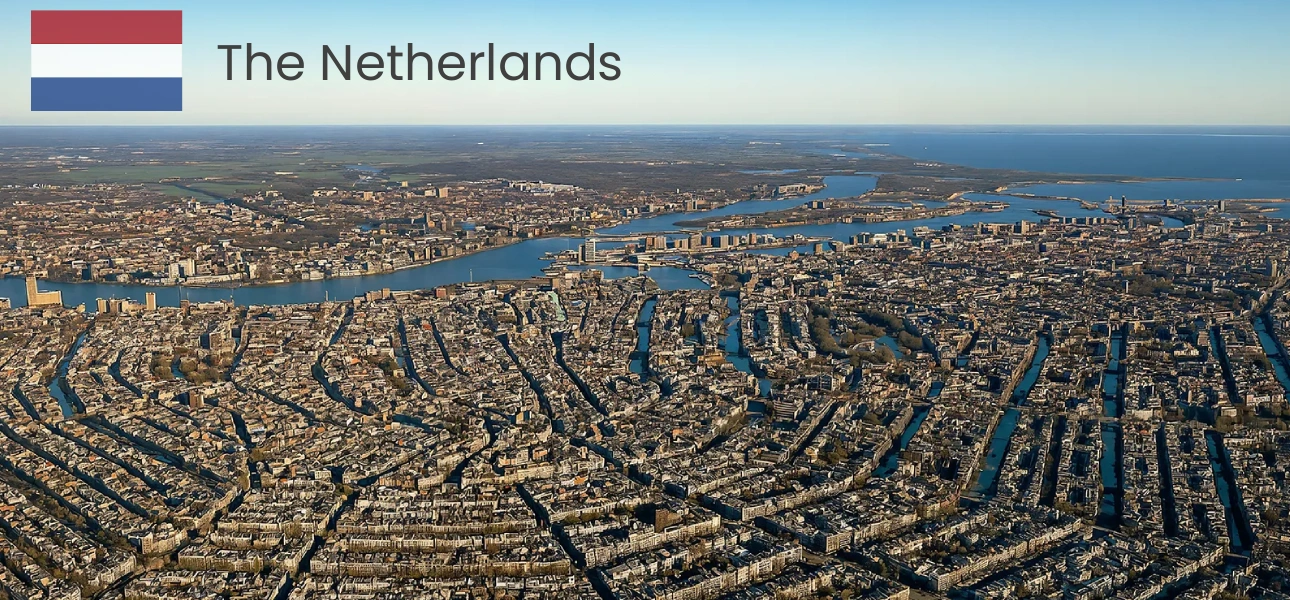The Netherlands has long stood at the crossroads of European logistics, a nation defined by its connectivity, efficiency, and strategic proximity to global trade routes. Yet today, the country faces an increasingly complex challenge: how to sustain logistics growth amid rising land scarcity and tightening zoning restrictions.
As available land becomes limited and environmental regulations intensify, developers and investors are being pushed to think differently. Logistics growth is no longer about building more, but about building smarter through redevelopments, sale & leaseback strategies, and capital-efficient partnerships that redefine how industrial space is created and used.
Understanding the Challenge: Why Is Land So Limited?
The Netherlands is among the most densely populated countries in Europe, balancing diverse demands on its limited land from agriculture and renewable energy to nature preservation and urban expansion. For logistics, this means that new greenfield developments are increasingly rare, especially near major infrastructure hubs.
Several key factors drive this scarcity:
- Zoning restrictions (Bestemmingsplannen): Local municipalities hold strong control over land use, often prioritizing residential, agricultural, or ecological purposes
- Environmental compliance: Strict nitrogen emission standards and sustainability goals have slowed permit approvals for new logistics construction
- High competition: Logistics operators, data centres, and renewable energy projects are all competing for the same strategic plots
How Are Developers Adapting to Zoning and Land Constraints?
Rather than expanding outward, developers across the Netherlands are optimizing upward and inward. A new era of adaptive logistics development is taking shape, characterized by creativity, collaboration, and capital precision.
Emerging approaches include:
- Redevelopment of aging industrial estates: Outdated facilities in areas such as Rotterdam, Almere, and Utrecht are being transformed into modern, energy-efficient logistics hubs
- Multi-level warehousing: As horizontal land becomes scarce, vertical designs, once rare in Europe are gaining ground in urban regions like Amsterdam and Rotterdam
- Collaborative zoning strategies: Developers now engage earlier with municipalities to align logistics needs with sustainability and planning goals
The game has changed! It’s no longer about what’s available, but about how strategically you adapt.
Discover Our Work : Acquisition Projects • Sale & Leaseback Projects • Development Projects
The Role of Sale & Leasebacks in a Constrained Market
Amid rising land costs and slower new development, sale & leaseback structures have become an essential financing and space-optimization tool. They allow occupiers to unlock capital from owned real estate while retaining long-term operational control, an attractive alternative in a market where liquidity and agility are critical.
For investors, these transactions offer:
- Immediate access to income-generating assets in prime logistics corridors
- Reliable tenant partnerships with established operators
- The opportunity to acquire scarce assets without waiting for new construction
How Is the Acquisition Landscape Evolving?
The competition for logistics-zoned land has made off-market acquisitions and brownfield investments increasingly attractive. Developers and funds are turning to redevelopment and repositioning rather than greenfield construction.
Key acquisition trends include:
- Focus on secondary hubs: Cities like Breda, Oss, and Lelystad are emerging as new logistics frontiers, offering accessibility and cost efficiency
- Municipal partnerships: Investors are collaborating directly with local governments to co-develop sustainable industrial parks that comply with spatial and environmental goals
- Off-market sourcing: Given the scarcity of listings, success often depends on established relationships and deep local intelligence
Where Is Innovation Taking Place?
Despite the limitations, the Netherlands continues to set benchmarks for logistics innovation across Europe.
Several key regions illustrate how developers are balancing growth and regulation effectively:
- Venlo Logistics Valley: A leading example of integrated planning, offering scalable logistics clusters while maintaining environmental safeguards
- Moerdijk Industrial Port: Evolving through redevelopment and expansion of multimodal infrastructure to serve the Rotterdam–Antwerp corridor
- Schiphol Trade Park (Amsterdam):A pioneering model for circular, zero-emission logistics combining efficiency with ecological integrity
- Tilburg-Waalwijk Corridor: Among the most in-demand logistics zones in Europe, driven by its intermodal connectivity and active redevelopment pipeline
These landmark areas show that limited land does not mean limited opportunity, provided the investment strategy is innovative, compliant, and capital efficient.
Broader Market Reflections: The European Parallel
Across Europe, particularly in Germany, Belgium, and the UK, the same pressures are evident, limited land, strict zoning, and heightened sustainability standards. Yet the Netherlands often leads in solutions. Its approach to spatial planning and redevelopment serves as a blueprint for balancing logistics growth with environmental responsibility.
The country’s experience highlights a fundamental shift: logistics real estate is no longer just about location, but about adaptability and resilience.
The Way Forward
The coming years will redefine logistics development strategy in the Netherlands through:
- Circular redevelopment and vertical expansion
- Hybrid capital structures combining sale & leaseback, forward funding, and co-development
- Closer coordination between investors, occupiers, and municipalities
- Data-driven asset optimization to meet sustainability and operational targets
Investing in the Future of Logistics
At RENEW Real Estate (RRE), we recognize that the future of logistics in the Netherlands depends not just on availability, but on adaptability. Our team partners with occupiers, investors, and developers to unlock value in this constrained market through strategic acquisitions, sale & leaseback structures, and forward-funded developments that deliver long-term performance.
RRE’s capital investment solutions are designed for a market where every square metre matters enabling businesses to expand operationally even when expansion geographically seems impossible. By combining market foresight with financial precision, RRE continues to support logistics transformation across the Netherlands and Europe.

